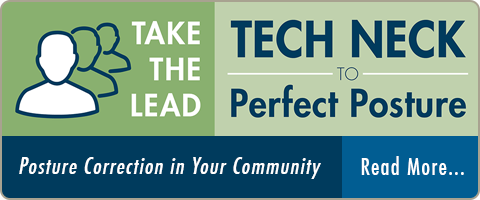Do you work with children in your office? Are you overlooking significant comorbidities associated with poor posture and back pain that can be seriously affecting your pediatric patients’ development?
As Posture Experts, we know that structure dictates function, and that poor alignment of the Posture System can have many symptomatic repercussions. Have you considered the association of poor posture and asthma?
It’s no surprise that with the postural decline of society, and with children spending more time seated in slumped postures than being outside playing, that there are serious side effects. Asthma is one of them.
According to the American Academy of Allergy, Asthma and Immunology, the number of people with asthma continues to grow. One in 12 people, or about 25 million had asthma in 2009, compared with 1 in 14, or 20 million in 2001. The average cost per person per year in the United States is approximately $3300 in medical expenses, missed school and workdays, and early deaths.
What most doctors are overlooking is the correlation of weak posture and asthma.
According to Lopes, et al. (2006), Patients with persistent asthma have been shown to have postural distortion patterns that increase airway resistance, making it more difficult to breathe. Abnormal postural adaptations of asthmatic patients also showed muscle shortening of respiratory musculature.
Hostbaeck et al. (2004) found a correlation of back pain and asthma in children and adolescents. The authors concluded that young people are more likely to suffer from asthma and headaches if they have low back pain. A total of 9,567 individuals, 12 to 22 years of age, responded to a questionnaire that they distributed. They determined positive associations between low back pain sufferers and asthma as well as low back pain, headaches and migraines.
Proper posture for asthmatic patients is a fundamental way of reducing the severity of asthma related symptoms. Posture Experts should educate their asthmatic patients of the importance of proper functional alignment and implement postural rehabilitation exercises to lengthen chronically shortened respiratory muscles.
If you have asthmatic children or adolescents in your office, take this into consideration. By correcting their postural presentation, more specifically the reduction of forward head posture and anterior chest flexion, you can greatly increase the quality of their breathing patterns.
This blog was originally published via Circle of Docs. You can find it here.
References
American Academy of Asthma, Allergy, and Immunology
Hostbaek, L. et al. (2004) Comorbidity With Back Pain, Spine, 29(13)1483-1491.
Lopes, E. et al. (2006) Assessment of muscle shortening and static posture in children with persistent asthma. European Journal of Pediatrics, 166(7) 715-721.


